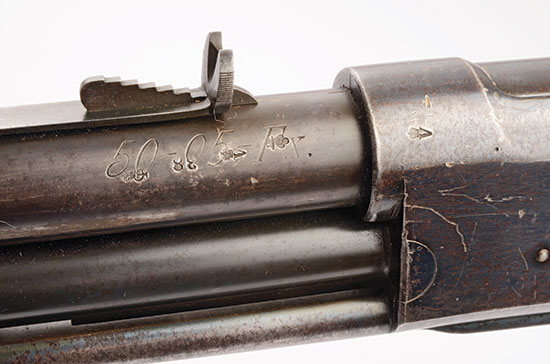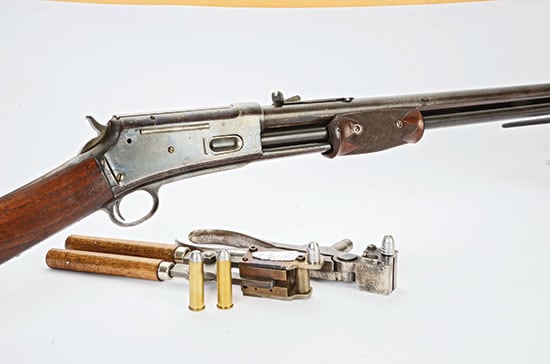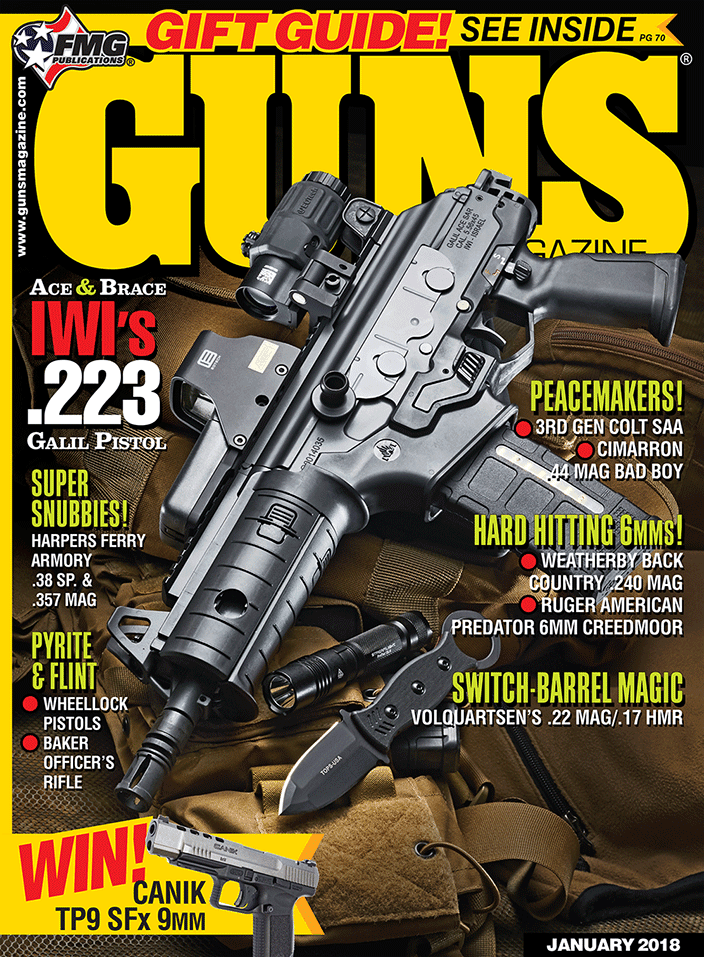Cat Guns
Power And Speed Of Operation Were Once Essential In
The British Empire Where Dangerous Felines Roamed
Don’t let the title throw you. Up front I want to state Yvonne and I are both cat and dog lovers. This is not about shooting lost or discarded house cats wandering onto our place. Those we “fix” so they can’t reproduce and give them a place to live on our Montana acreage.
In firearms collecting terminology, cat guns are vintage, big bore Winchester and Colt lever and pump action, repeating rifles sporting British proof marks. I’ve had the good fortune to have a genuine cat gun here on loan for a bit in a large-frame Colt Lightning chambering the .50-95 WCF.
As the British planted their Union Jack flag on so many colonies in Africa, India and Southeast Asia, they encountered animals not only fully able to kill you but happy to eat you afterwards. Lions, tigers and leopards to be exact. Undoubtedly, the mental image of a 19th century British adventurer held by most nowadays has them with a high-quality double rifle in their hands. Undoubtedly, that is a valid image. Sometimes.
Perhaps the less well financially heeled ones preferred American repeating rifles costing a few dozen pounds sterling instead of a few hundred. Or maybe it was those, who through experience, felt two shots might not be enough with a 400-pound tiger or lion coming head on at full tilt.
The first time I heard the term cat guns was while visiting a museum in Johannesburg, South Africa. On display there were several Winchester Model 1876 rifles. I asked our guide about them and he said, “Oh, those were cat guns. Farmers kept them in case lions came about.”
British law for well over a century states any firearm imported there has to pass through a proof house. There it is fired with proof loads to determine it is safe to fire. If the test is passed then the inspector stamps a variety of marks on it. Some experts can translate those little stamps but mostly I’m in the dark about their exact meaning.
However, I’ve been at antique gun shows when a vintage Winchester Model 1876 or Model 1886 in .50 caliber showed up and watched the experienced collectors get excited upon seeing those proof marks. The rifle will then bring a premium. It’s a “cat gun.”
Catlike Components
Although I’ve owned, handloaded for and fired Winchester .50-110s and .50-95s to one extent or the other, this Colt Lightning is the first true cat gun I’ve shot. It’s still in fine condition even though it’s over 100 years old. Along with it, the owner loaned me brass, dies and an ideal reloading tool with integral bullet mold.
The brass was purchased from Buffalo Arms. It had been cut to 1.94 inch to make .50-95 WCF from Starline .50-90 (2.50 inch) brass. This also required the case rim to be narrowed somewhat. The bullets cast in that old Ideal mold did not work out so well. Their diameter was 0.518 inch which was too large for the 0.508-inch barrel groove diameter of this Lightning.
Luckily, however, I had on hand a custom Hoch bullet mold. Its bullets dropped at 0.510 inch making it perfect for my purposes. According to an old Winchester catalog, factory bullet weight for the .50-95 was 300 grains. My Hoch design bullets weighed 330 grains poured of hard Linotype to 350 grains when cast of softer 1:20 tin-to-lead alloy. My shooting experiences showed no practical differences between the two.
Modern brass is more heavily constructed than 19th century cartridge cases, consequently holding less black powder. Instead of 95 grains all my cases would hold was 75 grains and still allow bullet seating. Modern Swiss 1-1/2 Fg black powder is fairly powerful stuff so it still gave me some idea as to what shooting this old cat gun felt like in its heyday. And that was powerful! Its muzzle blast was amazingly loud and it heaved a dense cloud of white smoke out about 15 feet. Likewise its recoil was stiff, probably because its crescent shaped steel buttplate was not designed for comfort.
From its 26-inch barrel my chronograph read a velocity of 1,385 fps with the 350-grain, 1:20 alloy bullets over 75 grains of black powder. On thin-skinned game such as the big cats at close range that 1/2-inch, flat nose chunk of lead had to deliver tremendous impact.
What about accuracy? Using the Lighting’s blade front sight and open buckhorn type rear, groups ran in the 3- to 4-inch range. As with most black-powder cartridge rifles, groups started out with the first two or three rounds clustering tightly and then opening up as barrel fouling increased.
The time of lever and pump action cat guns wouldn’t have been more than a couple of decades, say from around 1880 to the turn of the century when smokeless powder cartridges began their dominance. Rarity and proven historical provenance make them valuable collector’s items today.
Buffalo Arms
660 Vermeer Court
Ponderay, ID 83852
(208) 263-6953,
www.buffaloarms.com
Colorado Shooters Supply
Hoch Custom Bullet Moulds
910 N. Delaware Ave.
P.O. Box 3535
Roswell, NM 88201
(575) 627-1933
www.hochmoulds.com






